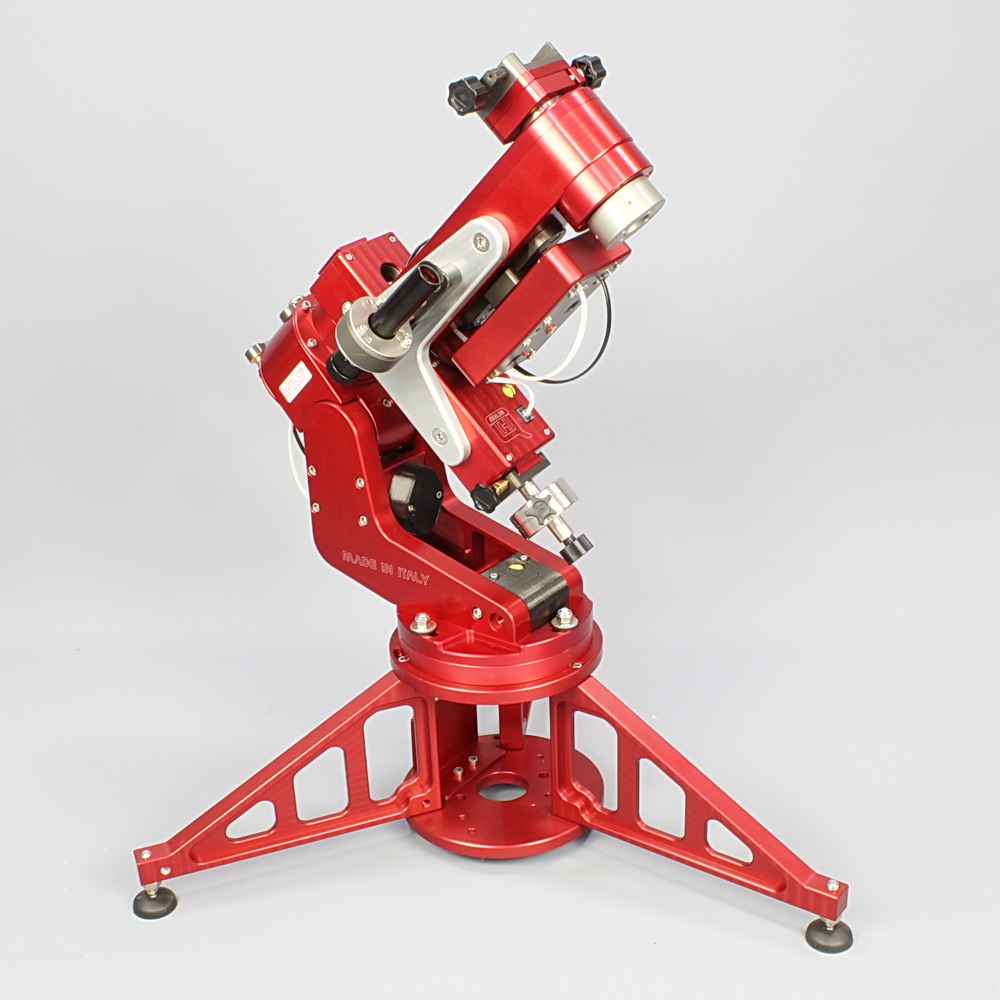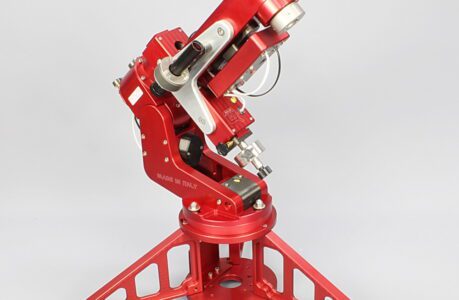Unlock the cosmos with the perfect telescope mount. Explore our comprehensive guide and discover the best options for your stargazing adventure. 🌌
Are you ready to embark on an astronomical journey, exploring the wonders of the universe? If so, you’ll need a telescope that can provide you with stunning views of celestial objects. But, equally important, is the choice of a suitable telescope mount. A high-quality mount can make all the difference in your stargazing experience, ensuring stability, tracking accuracy, and ease of use.
In this extensive buyer’s guide, we will delve deep into the world of telescope mounts, helping you understand the different types, their features, and which one is the best fit for your needs. Whether you’re an amateur astronomer or a seasoned stargazing enthusiast, we’ve got you covered
Introduction to Telescope Mounts
Before we dive into the world of telescope mounts, let’s understand their fundamental role. A telescope mount is essentially the support system for your telescope. It allows you to aim your telescope precisely at celestial objects and track them as they move across the night sky.
Choosing the right telescope mount is crucial for a rewarding stargazing experience. There are two primary types of mounts: Alt-Azimuth and Equatorial.
Types of Telescope Mounts
Alt-Azimuth Mounts
Alt-Azimuth mounts, short for altitude-azimuth mounts, are the simplest and most intuitive type of telescope mount. They have two axes of movement: vertical (altitude) and horizontal (azimuth). Alt-Azimuth mounts are easy to set up and use, making them an excellent choice for beginners.
These mounts are ideal for observing celestial objects like the Moon, planets, and star clusters, which do not appear to move rapidly across the sky. However, they are less suitable for tracking objects that follow the Earth’s rotation, such as deep-sky objects like galaxies and nebulae.
Pros of Alt-Azimuth Mounts:
- Easy to use, perfect for beginners.
- Quick setup and alignment.
- Suitable for casual stargazing and planetary observations.
- Typically more affordable than equatorial mounts.
Cons of Alt-Azimuth Mounts:
- Limited for deep-sky astrophotography.
- Not ideal for long-exposure photography.
- Requires manual adjustments to track objects.
Equatorial Mounts
Equatorial mounts, also known as polar mounts, are designed to compensate for the Earth’s rotation by aligning one of their axes with the celestial pole. This alignment allows equatorial mounts to track objects across the sky with precision, making them the preferred choice for astrophotographers and serious astronomers.
There are two main types of equatorial mounts: German equatorial mounts (GEM) and fork-mounted equatorial mounts. Both types offer excellent tracking accuracy, but GEMs are known for their versatility and are often used for astrophotography.
Pros of Equatorial Mounts:
- Precise tracking of celestial objects.
- Ideal for astrophotography and long-exposure imaging.
- Allows for automated tracking with Go-To systems.
- Excellent for observing deep-sky objects.
Cons of Equatorial Mounts:
- More complex setup and alignment.
- Typically heavier and bulkier than Alt-Azimuth mounts.
- May be intimidating for beginners.
Now that you have a basic understanding of the two main types of telescope mounts, let’s delve deeper into the factors you should consider when choosing the right one for your needs.
Choosing the Right Telescope Mount
When selecting a telescope mount, several crucial factors come into play. Let’s explore each of them in detail.
Budget Considerations
Your budget plays a significant role in determining which telescope mount is suitable for you. Alt-Azimuth mounts tend to be more budget-friendly, making them a great choice for those just starting in astronomy. Equatorial mounts, especially high-quality ones, can be more expensive. Keep in mind that while budget is important, investing in a stable and accurate mount is a wise decision for long-term satisfaction.
Payload Capacity
The payload capacity of a telescope mount refers to the maximum weight it can support, including the telescope, accessories, and any additional astrophotography equipment. Ensure that the mount you choose can comfortably handle the weight of your telescope and camera gear, as exceeding the payload capacity can lead to instability and tracking issues.
Portability
Consider how portable you need your telescope mount to be. If you plan to take your telescope on the go for stargazing sessions in different locations, a lightweight and compact mount is essential. Alt-Azimuth mounts are generally more portable, while equatorial mounts can be bulkier and heavier.
Tracking and Go-To Systems
For those interested in astrophotography or simply convenient stargazing, a mount with tracking capabilities is a must. Equatorial mounts are designed for precise tracking, making them an excellent choice for capturing long-exposure images of celestial objects. Some mounts even come with Go-To systems, which can automatically locate and track thousands of celestial targets.
Stability and Vibration Damping
Stability is crucial to ensure sharp and clear views through your telescope. Look for a mount with sturdy construction and good vibration-damping properties. Avoid mounts that are prone to wobbling, especially in windy conditions, as this can severely impact your stargazing experience.
Now that you have a better understanding of what to consider when choosing a telescope mount, let’s explore some top recommendations in the market.
Top Telescope Mount Recommendations
1. Sky-Watcher AZ-GTI
The Sky-Watcher AZ-GTI is a versatile Alt-Azimuth mount suitable for both beginners and experienced astronomers. It offers a payload capacity of up to 11 pounds, making it compatible with a wide range of telescopes. The AZ-GTI features built-in Wi-Fi, allowing you to control it with your smartphone or tablet. Its Go-To capabilities enable automatic tracking of celestial objects, and it comes with an adjustable tripod for stability.
Pros:
- User-friendly with smartphone control.
- Go-To system for automated tracking.
- Portable and easy to set up.
- Suitable for both visual and astrophotography.
Cons:
- Limited payload capacity for larger telescopes.
- Not ideal for deep-sky astrophotography.
Learn more about the Sky-Watcher AZ-GTI
2. Celestron Advanced VX
The Celestron Advanced VX is a robust equatorial mount designed for serious astronomers and astrophotographers. It offers a substantial payload capacity of up to 30 pounds, allowing you to use a variety of telescopes and imaging equipment. The mount features a NexStar+ hand controller for precise Go-To tracking, and it includes an improved tripod for stability. Its compatibility with Celestron’s StarSense AutoAlign system simplifies alignment.
Pros:
- High payload capacity for advanced setups.
- Precise Go-To tracking with NexStar+ controller.
- Compatible with StarSense AutoAlign for easy setup.
- Ideal for deep-sky astrophotography.
Cons:
- Heavier and less portable than Alt-Azimuth mounts.
- May be overwhelming for beginners.
Learn more about the Celestron Advanced VX
3. iOptron CEM70
The iOptron CEM70 is a premium equatorial mount designed for astrophotographers seeking top-tier performance. With a remarkable payload capacity of up to 70 pounds, it can support large telescopes and heavy camera setups. The CEM70 boasts advanced features like an internal cable management system, precise tracking, and an illuminated polar scope for accurate alignment. It’s a powerhouse for capturing stunning deep-sky images.
Pros:
- Exceptional payload capacity for professional setups.
- Internal cable management for a tidy setup.
- Precise tracking and Go-To functionality.
- Ideal for advanced astrophotography.
Cons:
- Considerably heavier and bulkier than other mounts.
- Requires experience to fully utilize its capabilities.
Learn more about the iOptron CEM70
Accessories for Your Telescope Mount
To enhance your stargazing experience further, consider investing in some essential accessories for your telescope mount.
Eyepieces
A set of quality eyepieces can greatly enhance your viewing experience by providing different magnification levels and fields of view. Eyepieces come in various designs, such as Plossl, wide-angle, and zoom, allowing you to tailor your observations to specific celestial objects.
Polar Alignment Tools
For equatorial mounts, precise polar alignment is crucial. Polar alignment tools like polar scopes or electronic polar finders help you align your mount with the celestial pole accurately. This ensures that your telescope tracks celestial objects smoothly.
Power Supplies
Many telescope mounts require power to operate, especially those with tracking and Go-To systems. Investing in a reliable power supply, such as a portable battery pack, will ensure uninterrupted stargazing sessions without worrying about running out of power.
Maintenance and Care
Once you’ve selected and set up your telescope mount, it’s essential to maintain it for optimal performance. Regularly check for loose bolts or screws, clean the mount’s moving parts, and store it in a dry and secure place to protect it from the elements. Proper maintenance will extend the lifespan of your mount and keep it in top working condition.
Conclusion
As you embark on your celestial journey, remember that choosing the right telescope mount is a crucial step toward unlocking the mysteries of the universe. Consider your budget, payload capacity, tracking needs, and portability when making your decision. Whether you opt for an Alt-Azimuth or Equatorial mount, the key is to find the one that best suits your stargazing goals.
With the right telescope mount, you’ll be able to explore the cosmos with precision and capture breathtaking images of the night sky. So, gear up, set up, and get ready to witness the wonders of the universe like never before.
Happy stargazing! 🌟
Disclaimer: The product links provided in this article are for reference purposes only. Make sure to research and compare products thoroughly before making a purchase.
This comprehensive buyer’s guide is your ticket to choosing the perfect telescope mount for your stargazing adventures. Whether you’re an amateur astronomer or a seasoned stargazing enthusiast, find out which mount suits your needs best.
Unlock the cosmos with the perfect telescope mount. Explore our comprehensive guide and discover the best options for your stargazing adventure. 🌌
Read on to explore the world of telescope mounts, understand their features, and find the perfect match for your astronomical journey.

